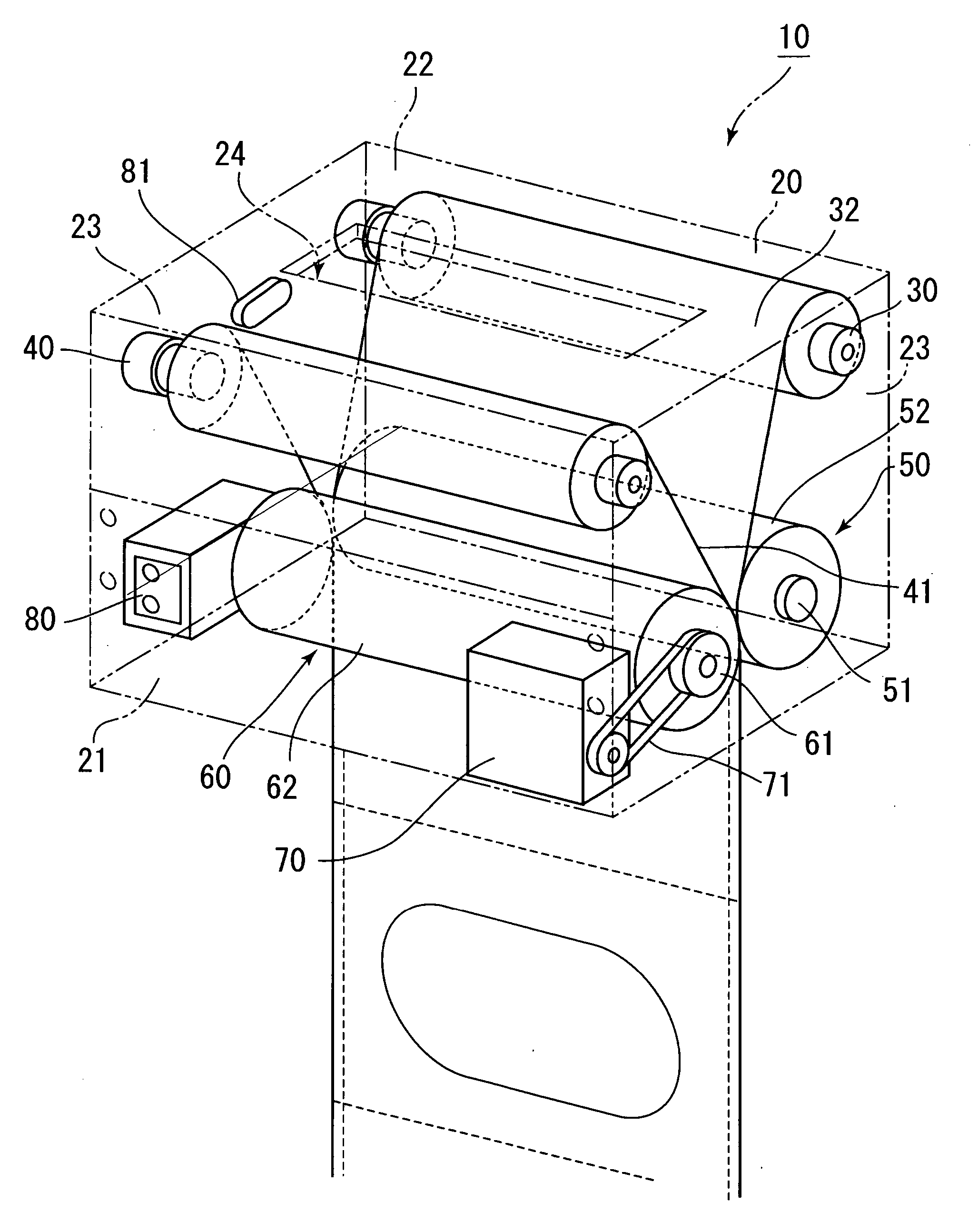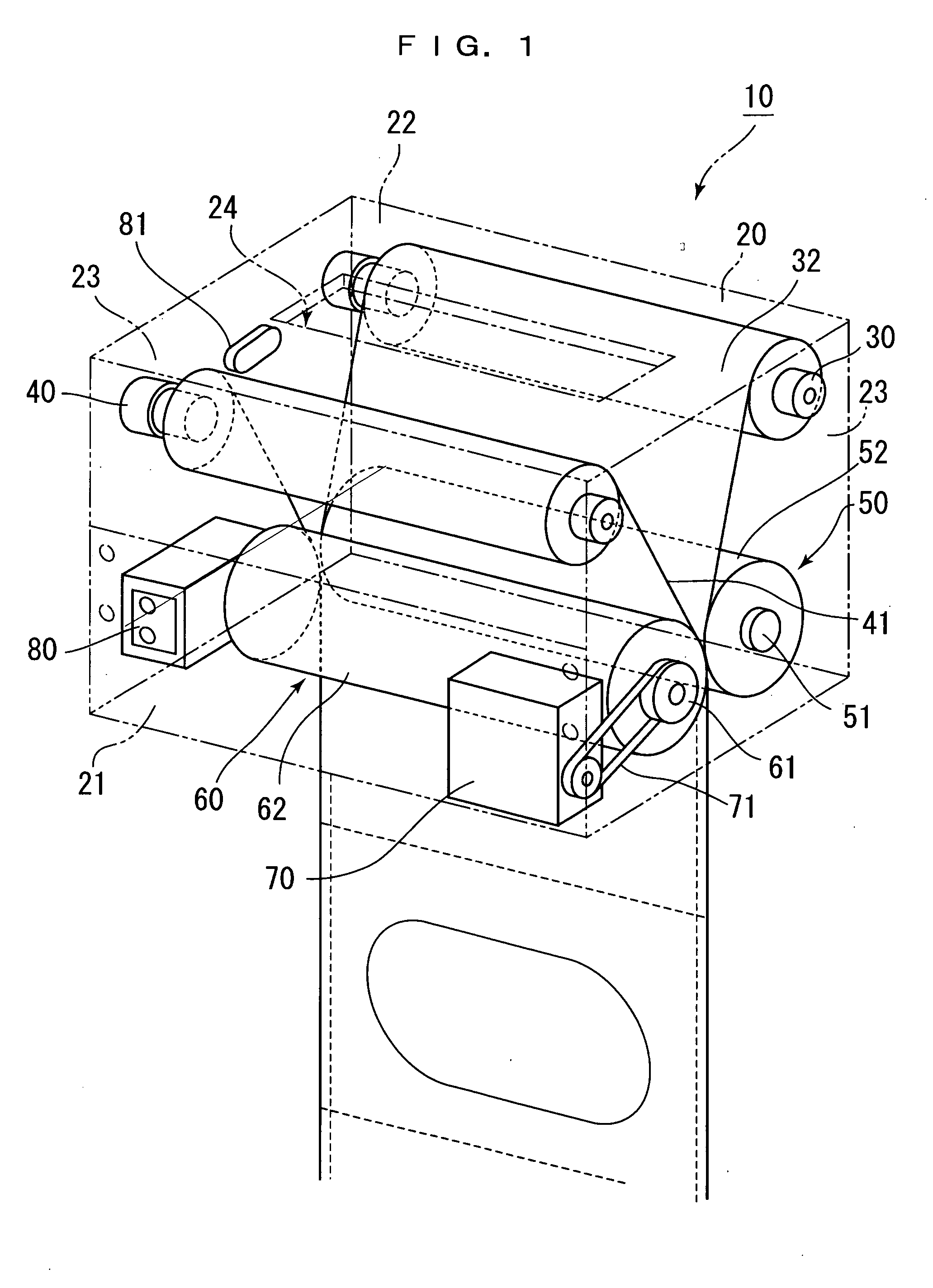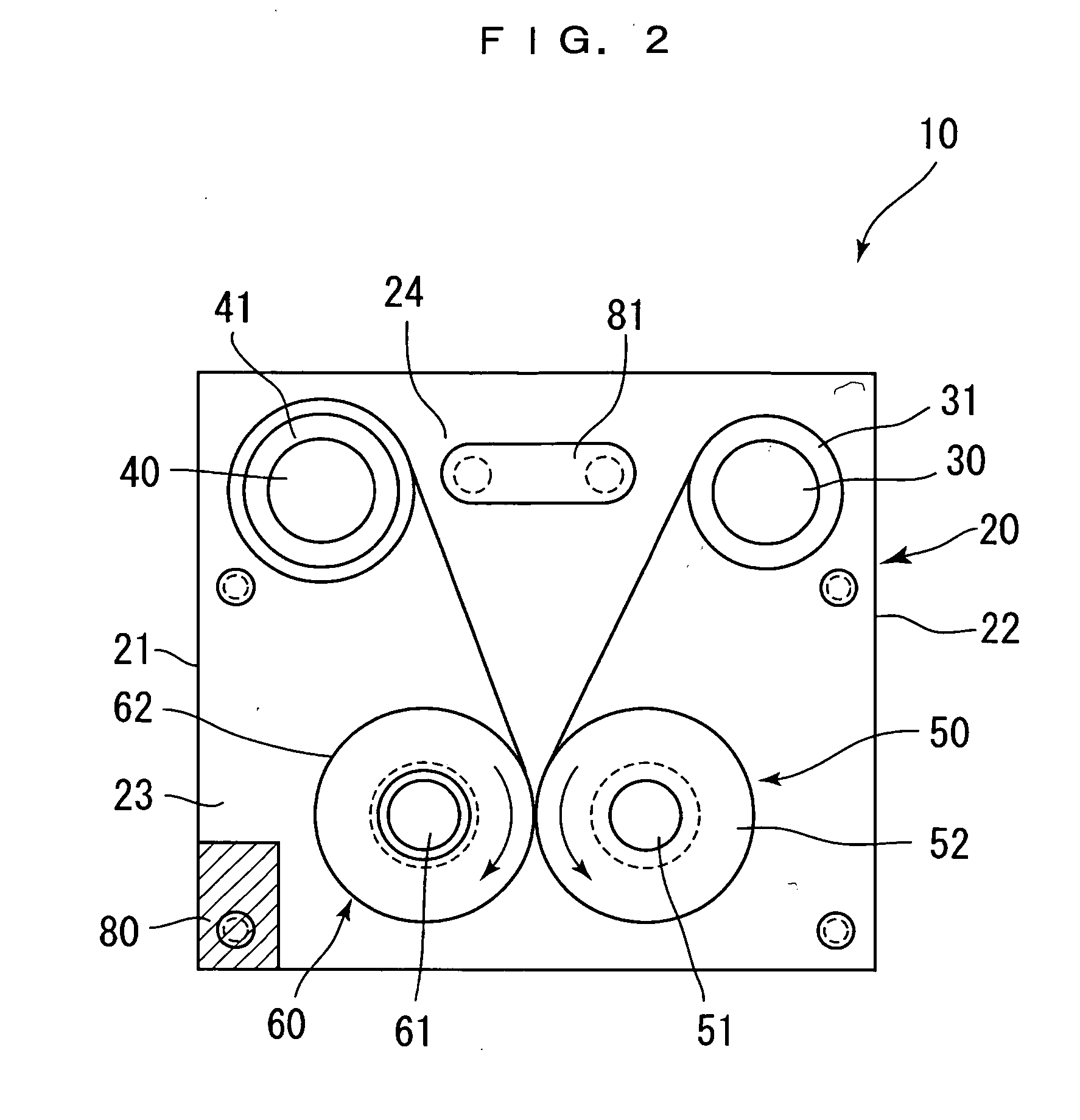Packaging device and trash box
- Summary
- Abstract
- Description
- Claims
- Application Information
AI Technical Summary
Benefits of technology
Problems solved by technology
Method used
Image
Examples
Embodiment Construction
[0045] Hereinafter, the present invention will be described in more detail based on embodiments of the present invention shown in the drawings.
[0046]FIG. 1 is a perspective view showing a structure of a packaging device 10 according to one embodiment of the present invention, and FIG. 2 is a side view of the packaging device 10. As shown in these drawings, the packaging device 10 of this embodiment has a frame member 20, film feed rollers 30, 40, film pull-out rollers 50, 60, and a motor (driving part) 70.
[0047] The frame member 20 may be any, providing that it can rotatably support the film feed rollers 30, 40 and the film pull-out rollers 50, 60, and a structure and a shape thereof are not limited. As shown in FIG. 1, this embodiment uses the frame member 20 including a front panel part 21, a rear panel part 22, and two side panel parts 23, 23 facing each other, and the rollers 30 to 60 rotatably extending between the facing side panel parts 23, 23. Further, as shown in FIG. 3, ...
PUM
| Property | Measurement | Unit |
|---|---|---|
| Width | aaaaa | aaaaa |
Abstract
Description
Claims
Application Information
 Login to View More
Login to View More - R&D
- Intellectual Property
- Life Sciences
- Materials
- Tech Scout
- Unparalleled Data Quality
- Higher Quality Content
- 60% Fewer Hallucinations
Browse by: Latest US Patents, China's latest patents, Technical Efficacy Thesaurus, Application Domain, Technology Topic, Popular Technical Reports.
© 2025 PatSnap. All rights reserved.Legal|Privacy policy|Modern Slavery Act Transparency Statement|Sitemap|About US| Contact US: help@patsnap.com



